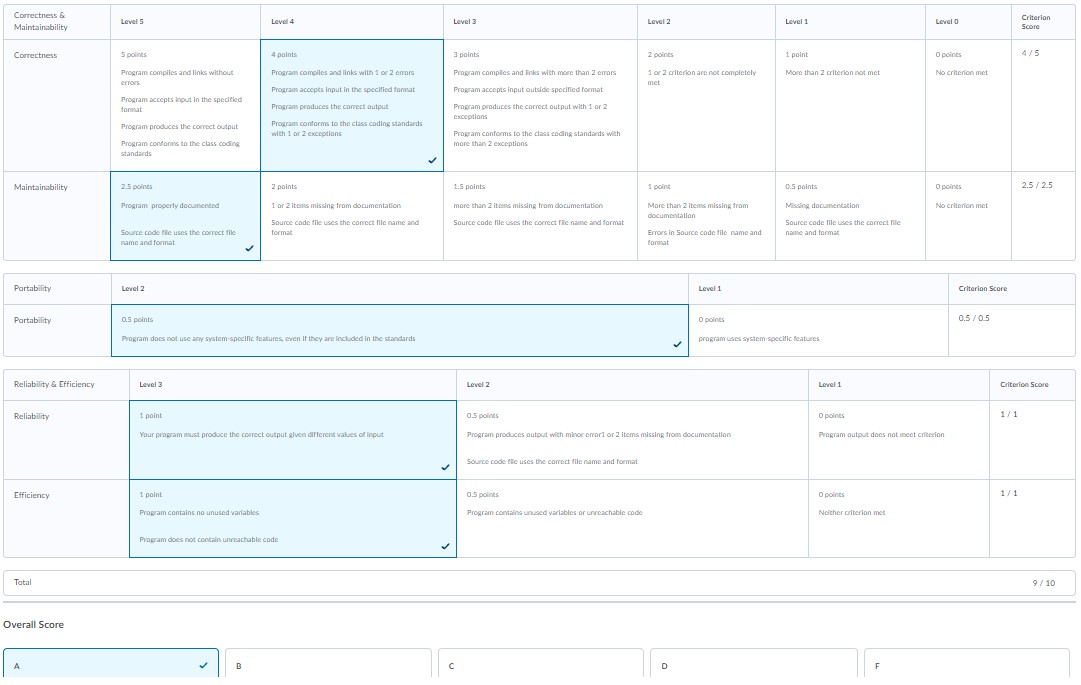This content was published: November 1, 2021. Phone numbers, email addresses, and other information may have changed.
Leveraging D2L/Brightspace to Enhance Equity in Your Course: Part 2 of 6
Posted by Tracey Pettit
Why Enhance Equity?
One of the strategic priorities of the strategic plan is Belonging:
Create a sense of belonging in our learning environment as a college priority, and as a key factor in equitable student success.
The goal of this series of blog posts is to set an intention of moving toward all teaching being inclusive and equitable, and away from having to define what inclusive, equitable teaching is. In our last blog post, we offered some suggestions for using announcements in D2L to make connections with students. This week we will explore tools in D2L Brightspace that can be used to enhance equity using feedback.
Feedback can Enhance or Diminish Equity
Research has confirmed that feedback is not reliably equitable. For example, in early academic life, female students are more likely to receive feedback on their learning, while male students are more likely to receive feedback on behavior (2). Additionally, research has also confirmed that African American and Hispanic students are less likely to receive targeted feedback that fosters growth than their White peers (1). The College Transition Collaborative suggests that “Students from racially minoritized backgrounds may even hear ‘I am criticizing you because I hold prejudices’” when they read feedback on assignments. They further suggest that referencing the standards you set for the work along with your assurance that the student can meet them can increase the likelihood of students using feedback to improve.
Using tools in D2L can provide you with a means to give objective feedback in three ways:
- Regarding the content of student work
- When the feedback is delivered
- Who receives the feedback
Recall that for all Remote and Online courses, there are minimum expectations for use of D2L that include things like announcements to students, course information/syllabus, and grade updates so students can track progress. Furthermore, Students at PCC in 2021 reported high importance but lower satisfaction with the quality of online instruction, feedback, and consistency in the quality of instruction from one online course to another. We can use the tools in D2L Brightspace to provide feedback easily, at once meeting requirements and addressing student needs.
Rubrics
Using a grading rubric can address all three ways to give objective feedback by providing students with explicit expectations for assignments, and indicators for both the strongest and weakest ways to complete an assignment within given skill areas (3). The rubric tool in D2L can also help you deliver feedback consistently across your roster. When you grade an assignment in D2L with the rubric tool, feedback is delivered immediately to students, and they will see exactly which level was met for each criteria in the rubric. (see screenshot below). You can additionally add individualized feedback to the assignment for each student to further build connections.

More Feedback Tools in Brightspace
The following provide details on how to use rubrics and other feedback tools in D2L including annotating written assignments and adding audio or video recordings in the feedback area.
- Use a Rubric to Grade an Assignment or Discussion
- Add annotations to student submissions in D2L Assignments
- Leave an audio or video recording in the feedback area using Video Note
We hope you are finding our series on enhancing equity in your D2L course helpful. Please share any ideas or anecdotes you have from using rubrics or other kinds of feedback in D2L in the comments below. Come back next week to read about how you can use D2L to increase equity through consistent and intentional course organization.
References
- Harber KD, Reeves S, Gorman JL, Williams CH, Malin J, Pennebaker JW. The Conflicted Language of Interracial Feedback. Journal of Educational Psychology. 2019;111(7):1220-1242. doi:10.1037/edu0000326
- Irvine, J. J. (1986). Teacher–student interactions: Effects of student race, sex, and grade level. Journal of Educational Psychology, 78(1), 14–21. https://doi.org/10.1037/0022-0663.78.1.14
- GORDON AD. Better Than Our Biases: Using Psychological Research to Inform Our Approach to Inclusive, Effective Feedback. Clinical Law Review. 2021;27(2):195-252. https://search-ebscohost-com.libproxy.pcc.edu/login.aspx?direct=true&db=aph&AN=149934602&site=ehost-live


Rubrics themselves are not-objective. While I find the idea behind this series good–as a BIPOC instructor, I find this particular post patronizing. It is written from the perspective of the dominant culture studying the other. I also feel like rubrics are based on a framework of whiteness. Thank you for doing this series though. I look forward to reading the next post.
Why are rubrics based on a framework of whiteness? Is science white? If you believe that, I’d suggest you re-examine the actual history of science. It’s also a rather huge insult to non-white people.
Thank you @Max for sharing your response. I definitely agree that tools and practices cannot be objective in and of themselves. It is the responsibility of each of us to examine our biases and how those biases may be interacting with the tools and practices we use for teaching.